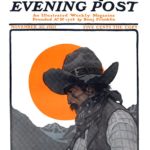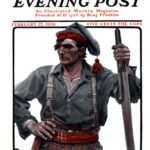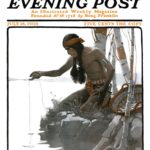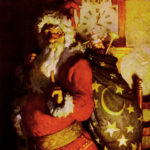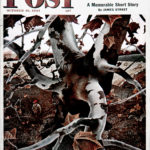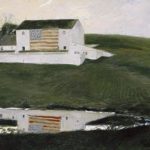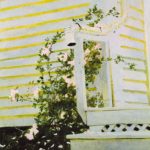Bavaria for Lovers
My hands are gripped around Jamie’s waist as I ride behind him on the back of a brand-new BMW motorcycle we rented in Munich. For the next five nights we will drive Bavaria’s Romantic Road, a 220-mile scenic route considered a German favorite that very few Americans have heard of, much less seen. Our first stop is the extraordinary Neuschwanstein Castle, on which Disney modeled Sleeping Beauty Castle.
I feel exactly like Sleeping Beauty with Jamie Anthony as my Prince Charming. Two years ago, we met unexpectedly at a blues club in New York City. I was wearing my T-shirt from the Blues Festival in Clarksdale, Mississippi, a festival that Jamie had also attended, so he introduced himself. I was smitten with his Southern accent (he’s from Atlanta) plus he was charming, smart, and attractive. Like me, he’d been divorced twice, thought Internet dating was a waste of time, and loved the blues.
Then he told me he loved riding his motorcycle, and I imagined black leather, silver studs, and tattoos, even though I saw none on his arms. On our third date, he invited me to join him on a motorcycle ride promising that if I didn’t like it, we’d turn around. Outfitted in protective helmets, ballistic jackets, and leather gloves, we left Manhattan bound for Bear Mountain State Park, a lovely wooded outpost just north of the northern New York City suburbs. I expected to hate riding on a motorcycle and was sure I’d want him to turn around after a couple of blocks, but it was exhilarating looking up at the skyscrapers from an entirely new perspective and, further north, watching the boats sail along the Hudson. It was also very sensual being tucked in against his body.
Since then, we’ve done some day trips by motorcycle, but never a weeklong trip in which everything we’re taking has to fit into three small cases attached to the bike. What’s even crazier is that this trip, traveling by motorcycle in a foreign country, was my idea. When I first mentioned the idea of this scenic drive by motorcycle, Jamie broke into a smile as wide as a four-lane highway, and that was it.

The Romantic Road route was partially based on an old trade route and on the Roman Via Claudia Augusta. During World War II it was called Germany Travel Path No. 1 and used to transport troops and supplies. In 1950, hoping to attract tourists and change its evil reputation, some clever marketing folks considered changing the name to the Romantic Road for Couples Who Fall in Love, then shortened it to the Romantic Road. And that’s exactly what it is, a region of Germany that has existed unchanged for centuries.
On the first day of our ride, a short trip from Füssen to Schwangau, we pass golden hayfields with round bales of hay glittering in the sun and pillowy hillsides laid out like patchwork quilts in every shade of green from emerald to lime. Wildflowers line the roadside, sunlight streams through groves of trees, and we pass herds of sheep and cows and dairies where we inhale the pungent smell of manure — in this context, a fresh and pure odor.
Schwangau is home to King Ludwig II’s 19th-century castle Neuschwanstein, one of the most photographed castles in the world. Ludwig, who was crowned king when he was just 18, was in love with Richard Wagner and created the castle and every room in it to depict the composer’s operas. Unfortunately, Ludwig’s love not only went unrequited, but Wagner married the wife of a famous music conductor, breaking poor Ludwig’s heart.

Our love is anything but unrequited, whether we’re walking hand in hand down crooked cobblestone lanes beneath the Alps in 12th-century Füssen, or sharing steaming plates of sausages, which seem to be the primary local fare. There’s bratwurst (pork sausage), weisswurst (white steamed veal or pork sausage), blutwurst (blood sausage), wiener (hotdog), and short and plump Regensburger wurst (boiled sausage with a pork filling). Every dish in Bavaria is served with potatoes or egg noodles and, always, sauerkraut. At one meal, I request a vegetable substitute for the potatoes and the waitress seems puzzled as she says, “But you have vegetable: sauerkraut!” Jamie and I squeeze each other’s knees under the table and try not to burst out laughing.
As we ride along each day, one of my favorite things is the sight of an onion-domed church in the distance, meaning we’re about to arrive in a medieval village where we’ll spend the night. It also means we didn’t get lost, which happens occasionally. Because voices can’t be heard above the sound of the engine, when I see a sign for the correct destination ahead, I stroke Jamie’s shoulder as if to say, “Nice job, sweetie, we made it.” Mostly I communicate by pointing as if to say, “look over there to that beautiful field full of sunflowers or fir tree forest or field polka-dotted with sheep,” just in case he didn’t see it. We’ve also made up our own signs. When I make a closed fist it means stop (usually for a photo), and when I make two closed fists, it means stop, take off your helmet, and kiss me.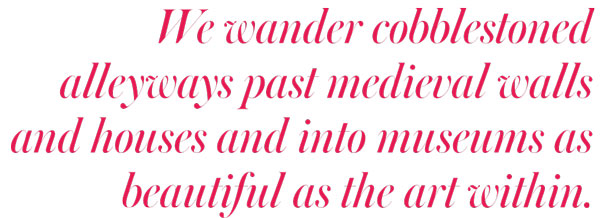
The hotels we have chosen are not posh, but they are comfortable and each offers something special. (For suggested lodgings and restaurants along the route, see
saturdayeveningpost.com/romantic-road.) In Füssen, we sit on our private balcony overlooking the lapis-lazuli-colored lake and watch the sun sink behind the Alps; in Augsburg, our room has a heart-shaped bathtub; and in Rothenburg ob der Tauber, we squeeze into the tiny elevator and remain locked in an embrace all the way up to our floor.
Each morning begins with a huge breakfast buffet of eggs, pancakes, bacon, sausages, cold cuts, cereals, yogurts, fresh fruits, rolls, muffins, and — my favorite — pretzel bread. Afterward, we wander the town, following cobblestoned alleyways past medieval walls and houses, into museums as beautiful as the art within, and inside Gothic churches with dazzling frescoes.
By midday we are loading our stuff into the bike’s cases and setting off toward our next destination, none more than 50 miles away. Before this trip, I always thought of driving as simply a way of getting from point A to point B, but here the drives are like a reset button. I don’t have a care in the world, and can think about nothing except enjoying the magnificent scenery with my man.
It’s also fascinating to learn the love stories of Germany’s most romantic cities such as Augsburg, the birthplace of Bertholt Brecht, Hans Holbein, and Mozart’s father, Leopold. It was in Augsburg that Leopold’s son Wolfgang Amadeus Mozart fell in love with his first cousin, but he lost interest. The young Mozart next fell in love with Aloysia Weber from Mannheim, but she rejected him. Mozart wrote to his father, “I can only weep. I have far too sensitive a heart,” and then courted Aloysia’s sister, Constanze, whom he married. At their wedding, the bride, the groom, the priest, and the entire congregation wept.
That evening, Jamie calls to me from the shower. I figure he’s left the shampoo on the sink, but no, he wants me to join him. I don’t think I’ve taken a shower with a guy since I was 30, but I eagerly step in, and we embrace under the running water, giggling like kids. For a brief moment I wonder what would happen if we slipped on the tub floor and one of us broke a hip. Later, we lie contentedly on the bed, listening to the church bells toll the hour.
In Germany, love is so often associated with music, especially along the Romantic Road. When Beethoven was 20, he played viola in the concert hall at Bad Mergentheim, a 14th-century village with a medieval castle. One legend has it that he was supposed to leave for Vienna to meet Mozart, but Beethoven missed the opportunity because he fell in love with a local girl. Beethoven was nearly always in love; one was a 16-year-old countess, a pupil of his, to whom he dedicated the Moonlight Sonata.

Sharing the moonlight with Jamie on the Main Bridge in Würzburg feels as romantic as any Beethoven sonata. In the middle of the bridge is a small bar where visitors can buy a glass of wine and stand overlooking the river. There, we meet a historian who tells us about Walther von der Vogelweide, a famous 12th- and 13th-century love poet who wandered from court to court, reciting poems in exchange for food and lodging. In 1230 when Von der Vogelweide died, he was buried in Würzburg, leaving instructions that the birds were to be fed daily at his tomb. But instead of birdfeed, lovesick visitors arrive with fresh flowers to leave on his grave. “It is said that when the flowers wilt, lovesick hearts will heal,” the historian tells us and then adds, “In the winter, they bring flowers that last longer.”
Jamie and I look at each other and smile. He squeezes my hand. How lucky I am that I don’t need to leave flowers at the love poet’s grave. And neither does Jamie.
Editor’s Note: Margie and Jamie were engaged in November in Bali and married December 13, 2014.
—
Margie Goldsmith’s “Bavaria for Lovers” won a 2015 North American Travel Journalists Association Silver Prize.
Wyeth Family Genius
Rain and fog envelope the small farmhouse in the village of Tenants Harbor, Maine, where James “Jamie” Browning Wyeth sits in the parlor talking about what it’s like to be the third generation of America’s first family of art. Although he turns 65 this summer, Jamie is a still-boyish man, handsome with a full head of hair, relaxed, candid, and, like his father, Andrew Wyeth (1917-2009), a dapper dresser given to mandarin collars, turtlenecks, tunics, aprons, and knickers—the habit of a country squire.
Despite all the ways that he is like his father, and they are many, Jamie is a very different kind of artist and very much his own man. “I grew up with the legacy thing. My father did, too,” he says. “That could crush you unless you left it outside the door of the studio. In a funny sense, though, my grandfather, who I never knew, had more of an influence on me.”
Newell Convers “N.C.” Wyeth (1882-1945) died in a tragic train-car accident in Chadds Ford, Pennsylvania, the year before Jamie was born. N.C. Wyeth was a larger-than-life figure, a swashbuckler of a man whose dramatic illustrations fired the imaginations of generations of readers beginning with his first illustration commission—a bucking bronco painted for the cover of the February 21, 1903, issue of The Saturday Evening Post.
By comparison, Jamie’s father, Andrew, was a quiet, reserved, and far more subtle and secretive man. Growing up in Chadds Ford, young Jamie played in his late grandfather’s studio amidst the costumes and props used in his grandfather’s pictures of cowboys and Indians, pirates and warriors. “For a kid, it was just magical. Then I’d go to my father’s studio where he’d be working on a dead bird or dried grass.”
Andrew became one of America’s most popular painters—the austere poet laureate of rural life in coastal Maine and Pennsylvania’s Brandywine Valley. Like his father and grandfather before him, Jamie paints both these places as well, the personal poles of the Wyeth world. And in each place the family has a museum devoted to its art—the Farnsworth Art Museum’s Wyeth Center in Rockland, Maine, and the Brandywine River Museum in Chadds Ford, Pennsylvania.
Where his father was a somber tone poet who sucked all the air and color out of local scenes in Maine and Pennsylvania leaving only the painted bones for eternity, Jamie paints with a lively, bold, colorful playfulness and freedom that recalls the melodrama of his grandfather’s illustrations for children’s classics such as Treasure Island, The Deerslayer, and Kidnapped.
Jamie generally marks his own decision to become an artist at 1958, the year he completed the sixth grade and, at his own request, left formal education behind to study art—first with his aunt, Carolyn Wyeth, and then with his father. Andrew, too, had been homeschooled and mentored by his father.
Young Jamie had already entered American art history, however, as one of his father’s subjects. “Faraway” (1952) depicts six-year-old Jamie sitting in a field in a coonskin cap with a distant look in his eyes (top, right). Jamie, a big Davy Crockett fan at the time, still remembers the hat, the boots he wore, and the long hours spent posing for his father. “I had a lead soldier that I played with every time my father took a break,” he recalls. “I lost it in the grass. I looked everywhere for it, but I couldn’t find it. I had dreams about that soldier.”
N.C. Wyeth was a hugely successful illustrator, but his attempts to paint landscapes were nowhere near as successful as his son Andrew’s. “His non-illustration work was rather self-conscious,” says Jamie of his grandfather. “There was this tremendous pride in his son but also this terrible jealousy.” The professional relationship between Jamie and his own father had elements of friendly rivalry, too, but it was far healthier. “In terms of painting, we were completely honest with one another,” says Jamie. “That I really miss.”
Although Andrew was enormously popular, his very popularity was the kiss of death in the contemporary art world, which—having embraced abstract expressionism in the 1950s—tended to view him as a throwback, a nostalgic realist. “Andrew Wyeth was one of the most misunderstood painters,” says his son. “He was no more a realist than the man in the moon. He painted a very strange, airless world.”
Jamie compares his father’s New England Gothic imagery to the spare poetry of Robert Frost. “At one level, it’s all snowy woods and stone walls,” he says. “At another, it’s terrifying. It exists at both levels.”
Still, Andrew’s paintings tend to exist in that gray area between critical scorn and public adulation. “I was at the Museum of Modern Art recently and there was a crowd around ‘Christina’s World,’” says Jamie of his father’s most famous painting, the iconic image of disabled spinster Christina Olson crawling back across a field to her Maine farmhouse. “The museum hates it. They hang it in a hall. But the guards will tell you the two most asked questions at the museum are ‘Where’s the men’s room?’ and ‘Where is “Christina’s World?”’”
The other charge that the art establishment throws at the Wyeths—all three of them—is that they are illustrators rather than artists. “I’ve always taken it as a supreme compliment,” Jamie said in a 1998 interview. “What’s wrong with illustration? There’s this thing now that illustrations are sort of secondary to art, and I think it’s a bunch of crap.”
Reminded of that defiant statement today, Jamie notes that the beloved painter Norman Rockwell was denigrated in the same manner. “I’ve always found Rockwell amazing,” he says, “but my father loathed him. He was almost threatened by Rockwell. He said he had no imagination—that he did everything from photographs with syrupy emotions.”
Jamie himself has no qualms whatsoever about answering the call to illustrate. One of his most recent projects was to paint pictures for the children’s book Sammy in the Sky, a realistic tale of canine love and loss by Pulitzer Prize-winning journalist Barbara Walsh. And, despite his occasional forays across the border into commercial art, his pure-art credentials remain untarnished. That’s partly because, unlike his father, he makes the effort to know and be known in the rarified art world. “He is far more interested than his father was in seeing what’s out there, and living in New York as he does part of the year is itself a statement about his engagement with the world of contemporary art,” says Michael Komanecky, chief curator at the Farnsworth Art Museum. He also notes that as a young man Jamie spent a lot of time at Andy Warhol’s Factory, arguably the epicenter of 20th century American art.
“With Warhol,” says Jamie, “I was just curious about him as a person. This peculiar little man in a wig just fascinated the heck out of me.”
Victoria Wyeth, daughter of Jamie’s brother Nicholas and Andrew Wyeth’s only grandchild, is the designated family docent, giving lectures on all things Wyeth when not working as a therapist in the Pennsylvania state hospital system. She sees her uncle’s art as much more varied than her grandfather’s. “Jamie is the future of our family,” says Victoria. “And he’s so different. He’s managed to do his own thing in his own style, and he’s painted everything from pigs to presidents.”
“Jamie’s art is more openly expressive and expansive, soliciting a wide range of emotions,” adds Wanda Corn, professor emerita of art history at Stanford University, author of The Art of Andrew Wyeth, and a board member of the Wyeth Foundation for American Art. “He can be funny, horrific, ghoulish, and theatrical. His brush is often wild and his color riotous. He enjoys provoking his viewers, making them feel extreme emotion. He is a great animal painter.”
A good-humored menagerie of dogs, geese, gulls, sheep, ravens, chickens, cows, horses, ducks, and especially pigs populate Jamie’s paintings. Enormous, pink, intelligent, clean, and forthright, pigs have become almost a totem animal for Jamie. As he explains in the text to the catalogue to his current exhibition, “Farm Work,” he first took a shine to pigs when a neighbor’s pig, a sow with a crooked snout named Den-Den, got into his studio and ate some of his oil paints. “Months later they were sending her to the butcher,” Jamie recalls. “I thought, I can’t have that. By consuming and surviving twenty-two tubes of my paint, she had endeared herself to me. So I took her to our farm at Point Lookout.” A steady stream of pig paintings ensued.
“The whole family has a wonderful sense of humor,” says Victoria, “and Jamie’s the one who paints with it.”
At almost any given time there is a Wyeth family exhibition somewhere in the world. “The Wyeth Family: Three Generations of American Art; Works from the Bank of America Collection” spent the summer of 2010 at the Dulwich Picture Gallery in London and will be featured at the Mona Bismarck Foundation in Paris from November 26, 2011, to March 6, 2012. Jamie’s “Farm Work” exhibition, which features his animal paintings, runs through September 11, 2011, at the Brandywine River Museum. And in 2014, Jamie’s own lifetime of art will be featured in a major retrospective at the Museum of Fine Art in Boston.
“I hate having shows,” Jamie confides. “All the inadequacies in the paintings scream out to me. Painting is so difficult, it reduces the three generations thing to nothing.”
But Jamie will soldier on, bearing the Wyeth family banner high into the 21st century, both because he wants to and because his father expected him to do so. It is his pleasure, his birthright, and his duty.
Andrew’s final words to his son were simple and direct—”Just give them hell.”
N.C. Wyeth
Learn more about Jamie and his work in our 2016 feature, “Jamie Wyeth: Born to Paint.”
N.C. Wyeth
May 20, 1905
N.C. Wyeth
November 30, 1907
N.C. Wyeth
February 22, 1908
N.C. Wyeth
July 18, 1908
N.C. Wyeth
September 26, 1908
N.C. Wyeth
Country Gentleman March 2, 1918
N.C. Wyeth
Country Gentleman November 1, 1926
N.C. Wyeth
June 1, 1944
N.C. Wyeth
November 1, 1944
N.C. Wyeth
December 1 , 1925
Andrew Wyeth
Andrew Wyeth
October 16, 1943
Andrew Wyeth
October 1, 1950
Jamie Wyeth
Jamie Wyeth
Jamie Wyeth
Jamie Wyeth
Jamie Wyeth
Jamie Wyeth
Jamie Wyeth
Jamie Wyeth
Jamie Wyeth

